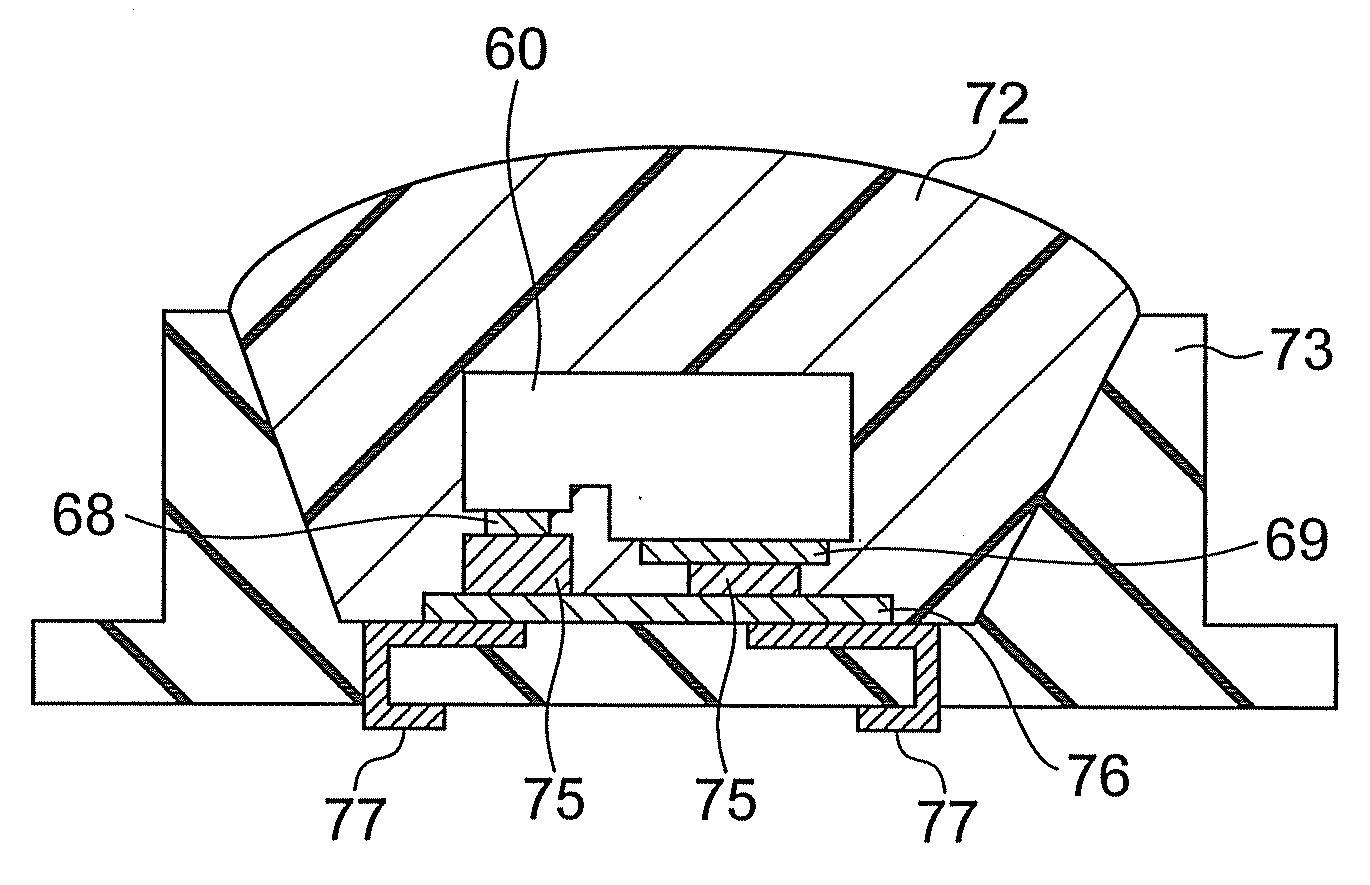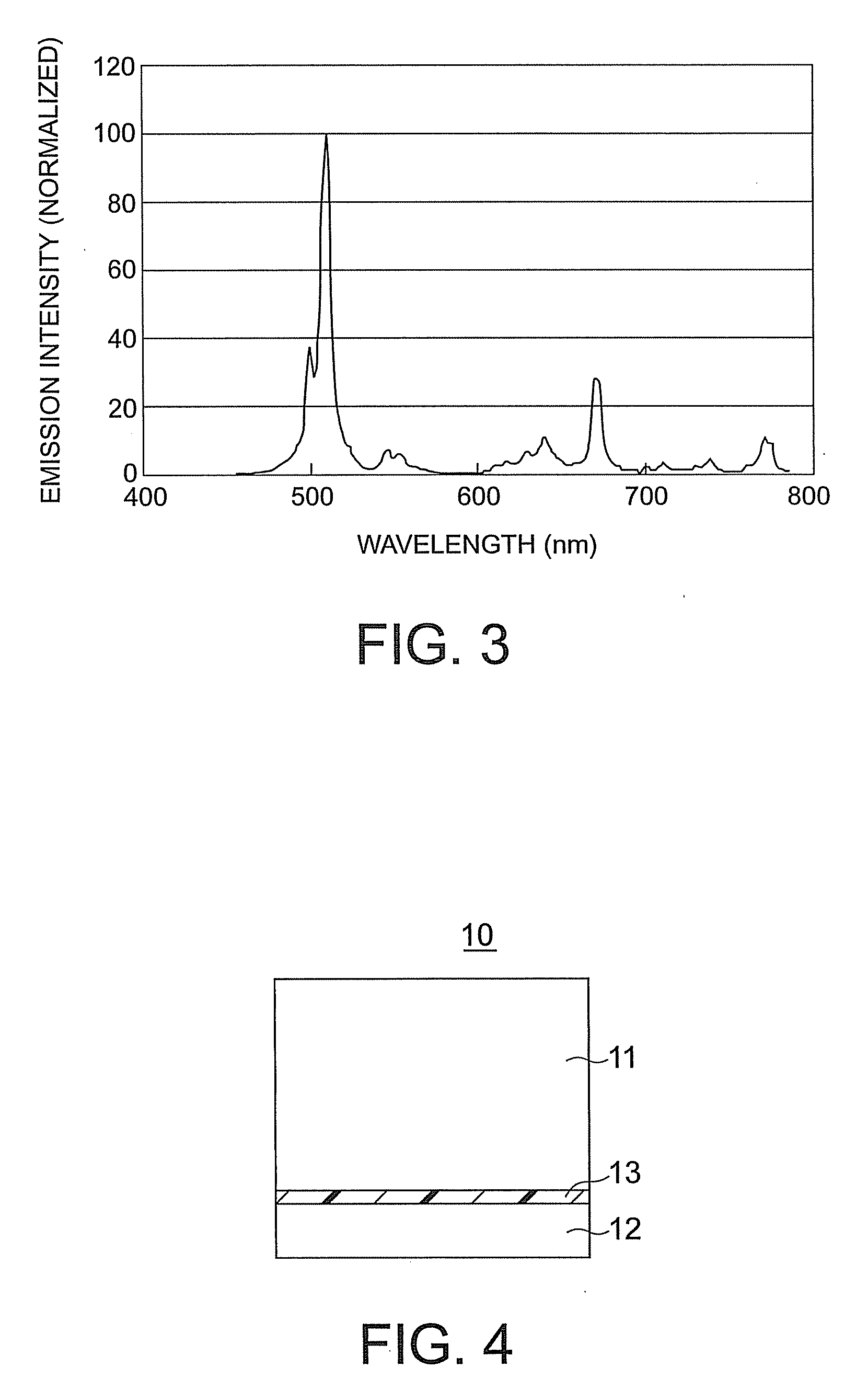Light-emitting material, scintillator containing the light-emitting material, x-ray detector equipped with the scintillator, image display device using the light-emitting material, and light source using the light-emitting material
- Summary
- Abstract
- Description
- Claims
- Application Information
AI Technical Summary
Benefits of technology
Problems solved by technology
Method used
Image
Examples
first embodiment
[0043]A first embodiment of the present invention will be described.
[0044]A light-emitting material according to the first embodiment of the present invention has a composition represented by NaYS2:Eu. The light-emitting material is obtained by adding Eu to a matrix represented by NaYS2. As far as the present inventors know, a phosphor represented by this compositional formula has not yet been known. In addition, the present inventors have found that this phosphor exhibits unique light emission different from that of a Eu-activated phosphor usually used.
[0045]In a case where Eu is added to a matrix containing a rare-earth element such as Y, Eu usually exists as Eu3+, and a line emission spectrum with a peak at about 610 nm to 630 nm unique to Eu3+ is shown.
[0046]On the other hand, it is known that in a case where Eu is added to a matrix containing an alkaline-earth metal such as Ba or Sr, Eu often exists as Eu2+, and a band emission spectrum unique to Eu2+ is shown.
[0047]The present...
second embodiment
[0065]The light-emitting material according to the second embodiment of the present invention can be produced in the following manner.
[0066]First, 20.49 g of Na2S, 102.4 g of Gd2S3, and 0.264 g of Eu2O3 as raw materials were weighed, and were then fired in a hydrogen sulfide atmosphere at 1,000° C. for 3 hours to obtain a light-emitting material according to the second embodiment of the present invention. The obtained light-emitting material also had a pink color. The light-emitting material according to the second embodiment of the present invention was excited by a pulsed electron beam having an acceleration voltage of 10 kV to evaluate the decay characteristics of the light-emitting material. As a result, the decay time of the light-emitting material, during which the emission intensity thereof was reduced to 10%, was 7 μs. From the result, it was confirmed that the light-emitting material had a sufficiently short decay time of 10 μs or less.
[0067]Further, the emission spectrum o...
third embodiment
[0071]A light-emitting material according to a third embodiment of the present invention has a matrix having a composition represented by ARS2, where A represents at least one element selected from Na, K, Rb, and Cs, and R represents at least one element selected from Y, La, Gd, and Lu. Examples of an activator to be used include rare-earth elements such as Ce, Pr, Eu, and Tb, transition metals such as Mn and Cu, and In, Sn, Sb, and Bi which become an ion having two s electrons and emit light by transition as in the case of Tl+. It is to be noted that the activator refers to an element doped so as to be a luminescent center. It is generally known that there is an optimum concentration of the activator, and in either case where the amount of the activator is too much or too little, emission characteristics such as luminous efficiency are deteriorated. The optimum concentration varies depending on the kind of matrix used and the kind of activator ion used, but often lies in the range ...
PUM
 Login to View More
Login to View More Abstract
Description
Claims
Application Information
 Login to View More
Login to View More - R&D
- Intellectual Property
- Life Sciences
- Materials
- Tech Scout
- Unparalleled Data Quality
- Higher Quality Content
- 60% Fewer Hallucinations
Browse by: Latest US Patents, China's latest patents, Technical Efficacy Thesaurus, Application Domain, Technology Topic, Popular Technical Reports.
© 2025 PatSnap. All rights reserved.Legal|Privacy policy|Modern Slavery Act Transparency Statement|Sitemap|About US| Contact US: help@patsnap.com



